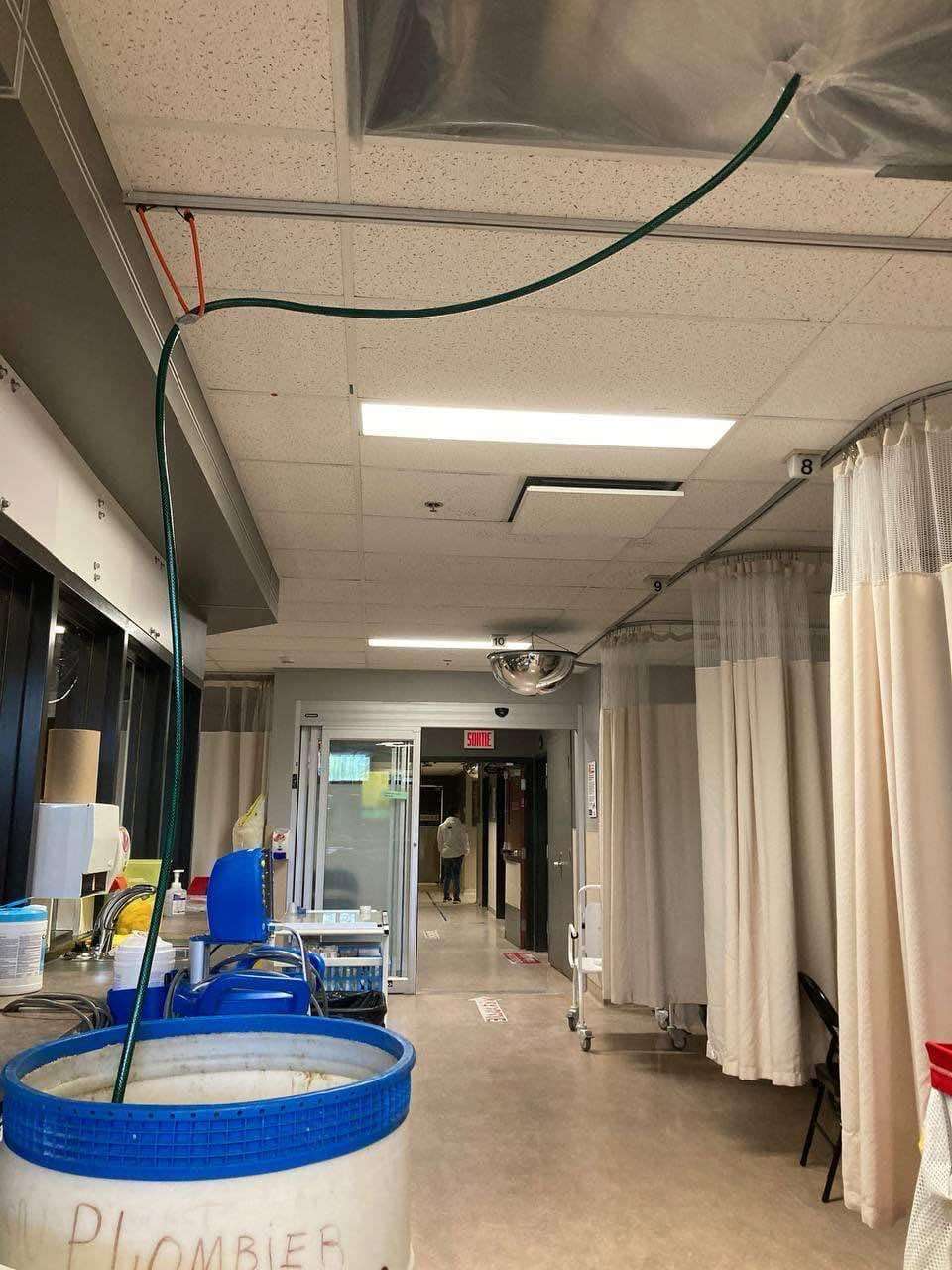Quebec’s hospitals are facing alarming deterioration, with issues like water damage and sealed-off areas becoming commonplace. Nearly 16% of hospitals are rated critically low, with some facilities like Notre-Dame Hospital scoring the worst possible index. Despite some hospitals receiving decent ratings, serious infrastructure concerns persist, prompting calls for new facilities and renovations. Healthcare workers are increasingly frustrated with unsafe working conditions, outdated systems, and inadequate emergency measures, highlighting the urgent need for comprehensive improvements across the healthcare system.
Alarming State of Quebec Hospitals
Water damage, sealed-off wings, muddy corridors, and even bats are just a few indicators of the deteriorating condition of hospitals in Quebec. With many facilities aging significantly, the financial burden of necessary renovations has reached astronomical levels.
Shocking Evaluations and Ratings
Data sourced from Santé Québec reveals that nearly 16% of hospitals in Quebec are in critical condition, receiving low ratings of D or E. Notable examples include a pavilion at Notre-Dame Hospital and two pavilions at the Philippe-Pinel Institute of Legal Psychiatry in Montreal, both of which have a deterioration index of a staggering 100 out of 100.
While the alarming statistics from the latest evaluations in 2021 may appear minimal, they merely scratch the surface of deeper issues within facilities that have otherwise favorable ratings. A case in point is the Maisonneuve-Rosemont Hospital in Montreal, where the infrastructure’s decay has sparked significant community outrage. Despite five of its pavilions boasting an A rating, another is marked with a C, raising serious concerns about the overall condition.
Similarly, in Drummondville, Santé Québec has assigned A and B ratings to various sections of Sainte-Croix Hospital; however, the deteriorating condition has prompted residents to advocate for a new regional hospital, leading to protests by hospital employees.
Robert Pelletier, vice-president of a local coalition, voiced his frustration, stating, “If these buildings are rated A and B, I can’t fathom what E-rated hospitals must be like—we might need protective gear!”
Water damage is so prevalent at Sainte-Croix Hospital that staff now implement a “turquoise code” to signal major incidents, prompting urgent mobilization. “We fix one pipe, but there’s no telling when another will give way,” Pelletier explains, highlighting the outdated plumbing systems.
Last fall, a sewer backup rendered the staff bathroom in the emergency department unusable, forcing the hospital to provide a comfort chair for the medical staff. Additionally, the widespread presence of asbestos complicates repairs whenever leaks occur. “The pharmacy leaked again in March, and it’s a continual issue,” laments Dr. Nancy Durand, a long-time employee.
In an alarming twist, bats are reportedly found between the walls of the hospital multiple times each year, raising questions about the facility’s safety and sanitation.
Healthcare workers are becoming increasingly weary of their working conditions, which are characterized by cramped quarters and cluttered corridors due to the aging infrastructure. Geneviève Viau from the Laurentides CSN Health and Social Services Workers Union stated, “The layout is no longer suitable for today’s needs, leading to chaos in the corridors.”
At Saint-Jérôme Hospital, over half of the facility requires renovation, with an estimated cost of nearly $450 million. Despite announcements made in 2019 regarding modernization efforts, progress has yet to materialize.
Santé Québec has not confirmed any upcoming renovation projects aside from expansion plans at Mont-Laurier and the Philippe-Pinel National Institute, both of which are still in the design phase. Meanwhile, the funding details for hospitals in Drummondville and Maisonneuve-Rosemont remain unclear, despite Health Minister Christian Dubé estimating a $2 billion reconstruction cost for Maisonneuve-Rosemont.
Further complicating matters, the juvenile pavilion of the Pierre-Janet mental health hospital in Gatineau has been rated with a D index, prompting calls for a third hospital to meet regional demands. Alain Smolynecky, president of the CSN Health Workers Union of Outaouais, noted that ongoing safety concerns regarding building deterioration have led to regular discussions with administration, particularly regarding water infiltration issues.
At Hôtel-Dieu de Sorel, the hospital’s elevators present significant challenges, as they only function half the time. Carl Barabé, a union delegate, stated that rather than replacing the outdated elevators, management opts for temporary repairs, leaving the entire facility in need of a comprehensive renovation.
At Suroît Hospital in Salaberry-de-Valleyfield, employees have resorted to providing reception bells to patients on stretchers due to the lack of emergency bells in the emergency room. Nancy Quenneville, president of the Canadian Union of Public Employees 3247, criticized this makeshift solution, emphasizing the absurdity of the situation and the urgent need for improvements.
